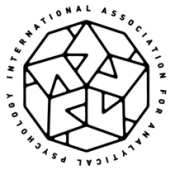
Patricia Berry
Archetype
Archetype is certainly one of the first notions we associate with the work of C.G. Jung. However, what Jung meant by this notion can be quite confusing. Part of the difficulty comes from his having used the term in a number of different ways, at different times, in varying contexts. Jung did not think in a typically linear, logical manner the way many other serious thinkers had done. Even Freud, with his more narrative, logical style is at times easier to follow than Jung. Jung did not tend to return to earlier notions or make corrections to them as had Freud on occasion. Jung was simply not that kind of thinker.
And in a number of ways, we might find ourselves the richer for Jung’s style. We certainly do find ourselves, in current Analytical Psychology, within a field very much alive with multiple perspectives and new ideas.
The broadest and most useful understanding of Jung’s notion of archetype overall is as metaphor — an “as-if,” a possibility or potential– which can be richly explored from a number of different perspectives. This metaphor has, however, something of an undercarriage as well — which is not meant to imply anything pre-existing, rigid, or fixed as with Plato’s forms, e.g., Jung explicitly specified he was not doing philosophy as was Plato. Rather Jung was, he says, doing psychology. So, by archetype he meant something empirical, alive, phenomenal in that it reveals itself only in and through living processes.
Jung uses a number of metaphors for describing such archetypal possibilities. Each example brings with itself different imagistic implications, and each metaphor can be commented upon best by reference to yet another image or metaphor.
One of Jung’s ways of imagining the archetypal is as when a crystal is dipped in solution such that the delicate three-dimensional structure of the crystal is revealed. For Jung, motifs, mythemes in folklore, literary tales or productions are also potentially archetypal. Another image Jung uses for archetype is as though it were a river-bed dug deep by experience; with yet another, he describes the archetype as though it were a psychic organ, or like an “instinct’s perception of itself.“ One might well add other potential examples – including life themes, typical forms of experiencing, modes of thinking, and so on. There are many possibilities.
Yet another, more obvious way of describing archetypes, is the more typologically personified- e.g., the Great Mother, the Wise Old Man, the Warrior… and so on. This more typified way of thinking about archetypes is emblematic and concrete but/and has its own kind of usefulness.
Sometimes, such uses are clarifying and helpful; other times less so depending on how one is using them and what one is doing with them. For denoting types of persons or personalities within a group or business association, such personifications can be helpful. For other situations, they may be too simplistic or simply typological in ways that lose or obscure individuality, particularity and complexity.
Jung sometimes thought in one way, sometimes in another, depending on context and situation. But whatever the case, primary for Jung was that the archetype was not only a simple image in action, but it was also always bi-polar. Jung thought in opposites. It was key to his method and part of his strength.
Psychologically speaking, thinking in opposites laid the ground for ongoing awareness of ambivalence and ambiguity deep within the very notion of archetype itself. This serves us well as a forerunner to an increasing sense of psychological differentiation and complexity.
Simple reduction was never what Jung was about. For him, causality was as likely to come from the past or more scientific or developmental thinking as well as from more finalistic or teleological notions of future or purpose. For Jung, there existed a time and place for each kind of thinking, although his specialty, and the major way he viewed his difference from Freud, was definitely toward the more purposeful and finalistic.
Another place where a frequent tangle occurs in thinking archetypally has to do with the place of instinct. For Jung, behaviors at an instinctual level are at times notable factors but they are never the sole cause of archetypal phenomena. For Jung, the archetype is spiritual. As an “image of instinct” Jung sees archetype as “a spiritual goal toward which the whole nature of man strives…” (Jung 1960)
A good way to keep focus on the archetypal levels of whatever phenomenon is being considered is to see it primarily as metaphor. In this way one need not worry about inflating or claiming too much. And, at the same time, the practice may allow the most possibilities and broadest reach. What is not meant by metaphor is to see things on an only singular, or literal level. If we keep this in mind, the notion of archetype will and does continue to serve us well in the discipline of Analytical Psychology.
Reference:
Jung, C.G., (1960). “On the Nature of the Psyche,” CW 8, para. 415. London: Routledge & Kegan Paul LTD.

Patricia Berry (Pat) Pat graduated from the Jung Institute in Zurich in 1975. Since then, she has served on a number of faculties and boards of Jungian training institutions. She is one of the founders of Archetypal Psychology and is the author of Echo’s Subtle Body: A Contribution to Archetypal Psychology. Other more recent articles include: “Image in Motion,” “Rules of Thumb,” and “A Little Light.” In 1991 she was the first Scholar in Residence at Pacifica Graduate Institute. She has a PH.D. in Psychology from the Univ of Dallas, teaches internationally and has served as president of both the New England and the Inter-Regional Societies ofJungian Analysts. She currently resides in Carpinteria ,CA.

